The parallels between Marlowe and the ancient Chinese city of Pingyao might not be immediately apparent, but I’d argue that Pingyao could easily adopt Marlowe’s philosophy as its slogan. Our time in China prior to visiting Pingyao taught us many things about the nation’s utilitarian world view, not least of which is that the value of old, historic places is generally viewed solely in terms of cold hard cash; if it can’t make money, then bulldoze it to the ground to make room for something that does. So long as something pulls in a profit, it has a purpose and is viewed as worth keeping around. Although Pingyao is one of the country’s oldest and best preserved examples of a traditional walled city, the reason it continues to exist today is not by virtue of its age or historical significance, but simply because it has proven to be an extremely lucrative tourist attraction.

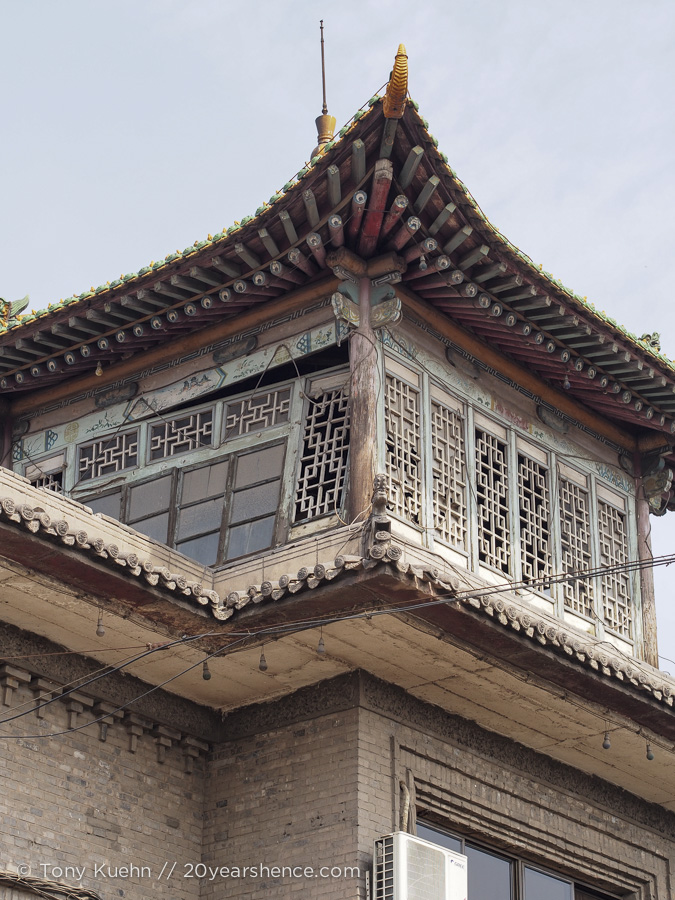
But what does this have to do with Marlowe’s creed? Well, our visit to Pingyao brought us face-to-face with a difficult catch-22 that every traveler eventually faces (perhaps more so in China than other places): certain attractions only continue to exist because of tourism, yet the force that sustains them can serve to simultaneously destroy their very essence. Some places manage to successfully walk the delicate tightrope between catering to tourists and the lifeline their money provides while still preserving the original integrity of the attraction people are flocking to see. Difficult though it may be, it can be done. Just look at our experience at the Yuanyang Grottoes in Datong. Unfortunately, Pingyao manages to miraculously serve as a case study in the destruction that results when tourism runs unchecked, as well as the flip-side of the equation, the loss that occurs when a place is not considered sufficiently touristy to warrant care and preservation.
Hardly the stuff one would expect to hear about a UNESCO World Heritage site. Then again, the Forbidden City also has the UNESO stamp of approval, and you all know how well that worked out for us…
So maybe we shouldn’t have been surprised when we exited from the train station and found ourselves cloaked in clouds of dust and debris, rather than the swirling mists of centuries past. The buildings were blanketed in that omnipresent layer of grime that turns them all the exact same dull shade of grey, the streets were littered with refuse and trash. Our first impressions of Pingyao were as bleak and depressing as all the other cities we had seen thus far.


My heart lurched, but I tried to hold out hope — we were here to see the old city, not the train station environs. Plus, we already had a hotel booked, so we might as well make our way toward it and see if the old part of town was any better. We hopped in one of the omnipresent golfcart-motorcycle hybrids that were idling outside the station and headed for the walls of the old city, one hand grasping tightly to the rickety frame of our Frankenbuggy, the other clasped firmly over our mouths as a last defense against the vortex of grit that churned around us as we skittered down roads lined with ramshackle stalls and tired convenience stores.
If we were expecting a miraculous transformation as we crossed the threshold into old Pingyao, those fantasies were swiftly dispelled. Though we knew only three major streets in the city had received meticulous preservation attentions, we were totally unprepared for the squalor that comprised the rest of what lay behind those ancient walls. We passed by alleys and narrow lanes, each a variation on an endless theme of grey, filled with nothing more than scrap materials, and crumbling, half-demolished buildings; I half-believed our driver had taken a wrong turn and accidentally detoured through a building site, rather than a centuries old national treasure. Far from being a preserved city, Pingyao was festering and falling apart before our very eyes.
Upon reaching the street which contained our hotel, optimism began to stir within our hearts one more as we noted that this section of old Pingyao was decidedly prettier than what we had battled our way through. Before these flutterings could take flight, we were slammed back to earth, as we our room wasn’t ready for us (though it was well after the time we had been told to arrive) and we should return in three hours. Ready or not, it would seem now was the time to set about exploring Pingyao.
We tried our very best to wipe the slate clean and open our hearts and minds to Pingyao, determined to discover its secret charms. As we strolled down the main tourist thoroughfare, however, a chilling realization settled over us: the secret to Pingyao’s charm is that there is none.
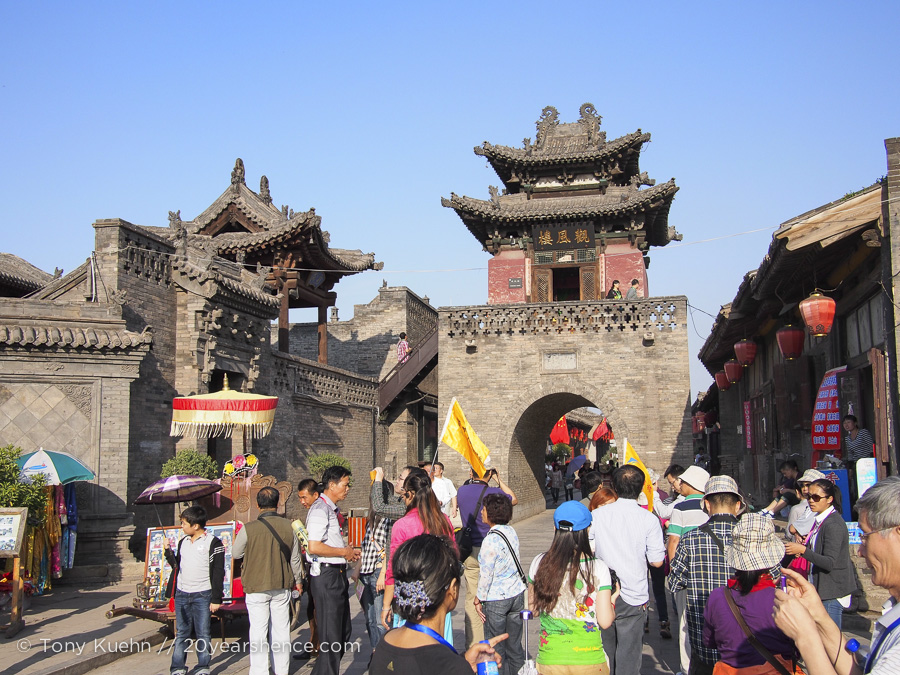
A harsh declaration, but unfortunately a true one. Limit yourself to purely cursory glances around the restored core of the old city, and you might find yourself tempted to conclude that your surroundings are picturesque, and yes, even quaint. The roads are paved with cobblestones, the roofs exhibit traditional concave rises and pointy peaks, tasseled red lanterns hang above the entryway of each building, beguiling passersby into drawing closer to take a better look at what lies within. To do so is a mistake, as Pingyao’s loveliness is all artifice.
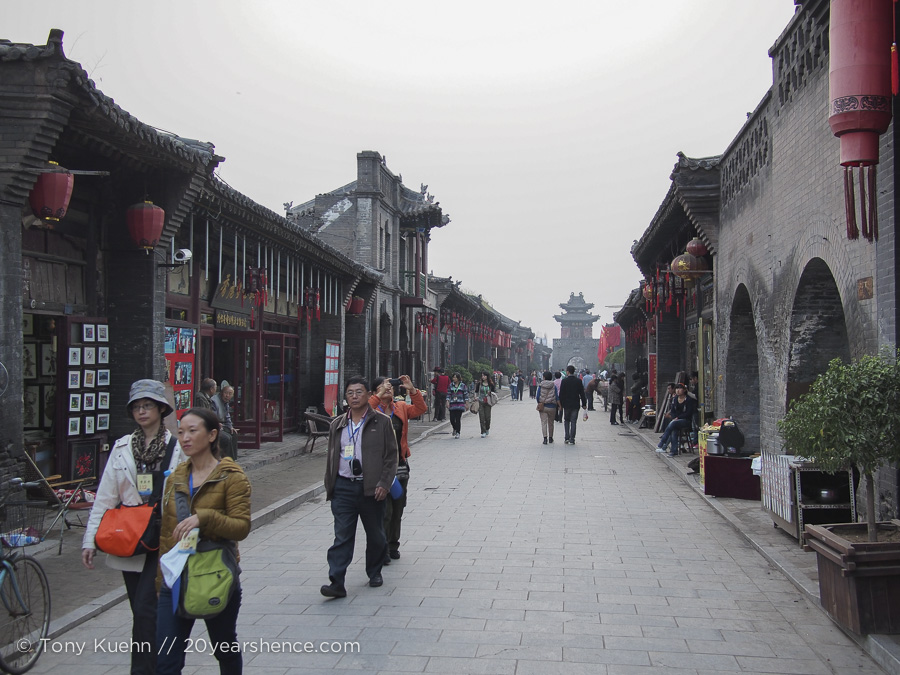
One travel guide likens visiting Pingyao to stepping onto the set of a historic film. The accuracy of this description is actually uncanny, as Pingyao is all about superficially appealing facades that only serve to mask the hollow voids lying just below the surface or across the threshold. Step too near, and the magic is lost. The bulk of the buildings lining the streets are restaurants, courtyard hotels, or souvenir and trinket shops selling useless and irrelevant items (apparently the world’s supply of bongo drums have all wound up here). If you come to Pingyao expecting a city fossilized in amber or a living museum, you will be sorely disappointed. Instead, think of it like a visit to Epcot in Orlando, Florida, where the Mexican haciendas all contain Tex-Mex food and maracas, the German buildings are all beer gardens and pretzels, and Scandinavia is a water boat ride with a sea monster at the end. Drop Pingyao into the China section of such a park, and you’d never know the difference.
The Pingyao of today remains a merchant city, but with all the trappings and shallowness that is part and parcel of rampant commercialism in the 21st century. Littered intermittently between the bongo shops and coffee houses, you may spy the occasional building whose contents are potentially of historic or cultural significance. Unfortunately, entry into any of these attractions requires that a citywide ticket of 150RMB (~$25USD) be purchased. This goes for walking the city walls as well. We were so disenchanted by the city that we couldn’t stomach forking over that kind of money, as we honestly didn’t believe there was anything there to justify that kind of cost. We settled for trying to walk the perimeter of the city, only to be run off the road by wayward golfcarts and motorized bicycles. We scurried into a side alley, one that hadn’t been restored for the benefit of tourists, only to find ourselves surrounded by crumbling buildings, courtyards filled with junk, and a child treating the laneway as a public toilet. We were watching the city turn to shit before our very eyes.
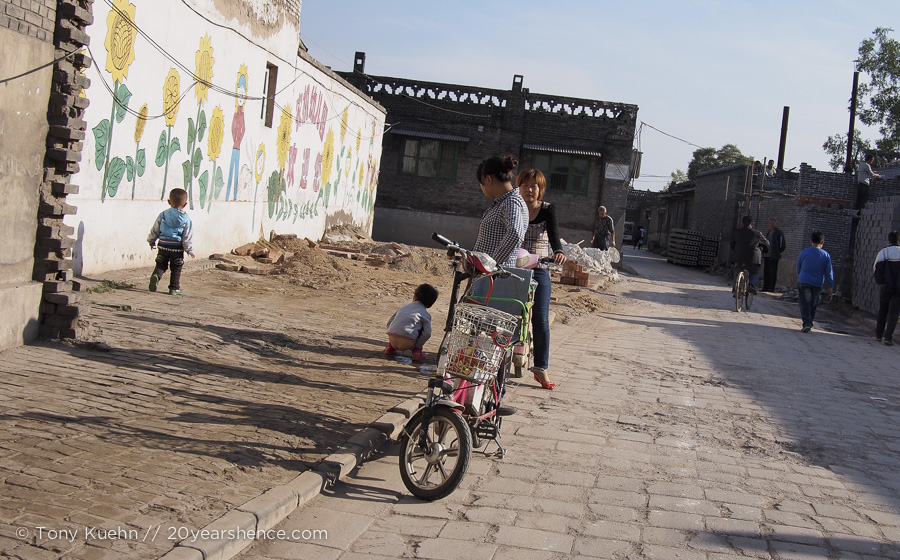
We scrambled to the Central Market Tower, the sole attraction you could pay for on its own, in a bid to clear our heads and perhaps gain some perspective. From up high, we could admire the age and detail of the rooftops without dealing with what lay beneath all of them. Of course, the Central Market Tower is one of the best preserved monuments in Pingyao as well as one of its focal points, which you miss once you’ve climbed up it. And quite honestly, even from the top of this tower, you’re still not quite far enough away from Pingyao to ignore the telltale signs of its overall decay – the vantage point from above only made it easier to catch glimpses of courtyards piled high with crumbling building materials. Our fanciful visions of hidden gardens filled with greenery and the gentle lap of fountains plummeted and smashed on the cobblestones below us…
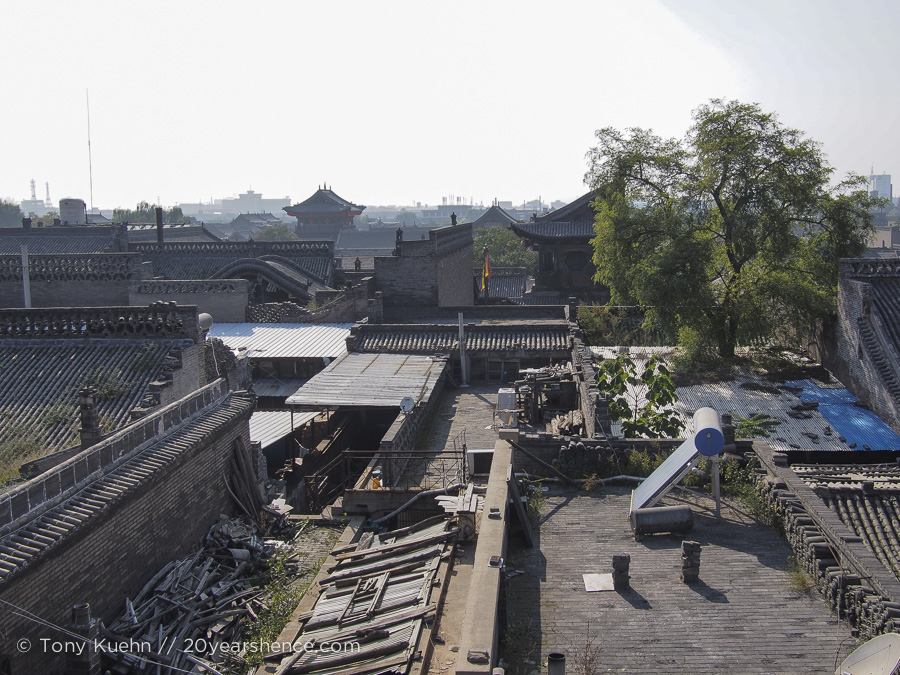
I could go on, but why belabor the point? Within minutes of visiting Pingyao, we wished we hadn’t come at all. In a single city, we witnessed the culmination of the conflict that we had observed at every turn since entering the country. Like China itself, Pingyao stands at a crossroads between past and present. In hot pursuit of modern life and money, the first things to go are the vestiges of the past, no matter their cultural or historical significance. When the bulk of a city that has withstood centuries finally falls and concedes defeat in the face of modern China, I am forced to ask whether we can truly consider the small part of Pingyao that has visually been upkept as anything but a bittersweet victory. The portion of the city that has been considered unnecessary for generating profit lies abandoned and mouldering, a battlefield strewn with skeletons. Yet, surely we cannot accurately call the tourist segment of Pingyao “preserved”, for that suggests something authentic has been maintained and cultivated, which is patently not the case.
Pingyao is a dying city desperate to be born anew, keeping some of its former graceful face but with a mercenary 21st century soul. Dodging the motorized menaces that prowl its cobbled streets, with bongos and ocarinas providing an ill-fitting soundtrack, a person might find herself wondering where in this world heritage site is the actual heritage to be found? I wish I could tell you, but we spent two days searching in Pingyao and never caught so much as a fleeting glimpse of it. And so it goes: another soldier falls in China’s battle for progress.
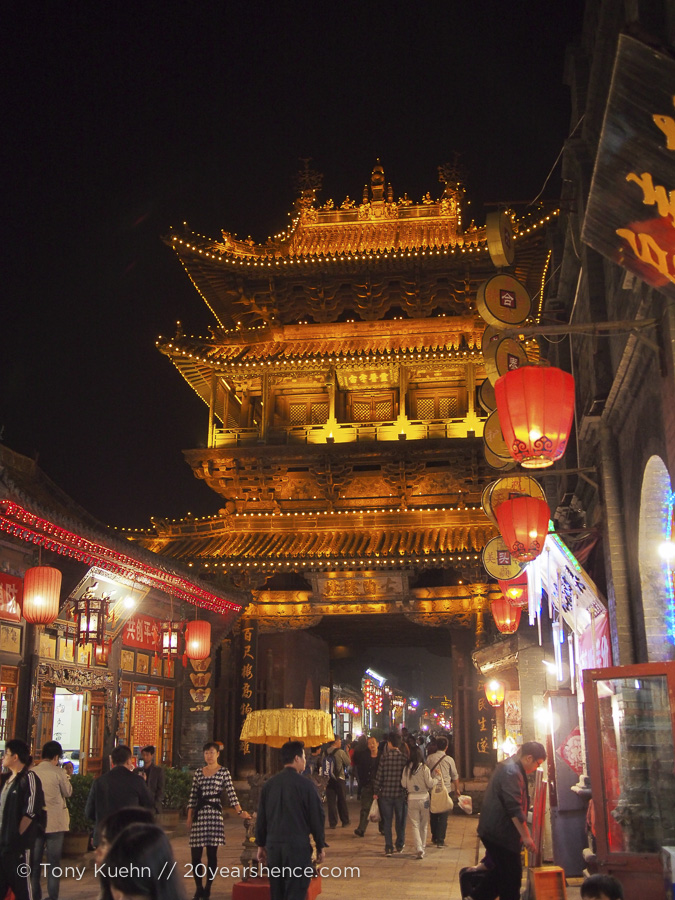
Bummer 🙁 I guess this is bound to happen every once in awhile on a big trip like yours, but it still sucks! I totally agree that the area gets gray and hazy when it comes to making a historical site into a tourist attraction, thus destroying the site… the main reason I skipped Macchu Piccu in Peru and went to the less-traveled Kuelap instead!
Yes, it’s not as though we don’t understand the dilemma – after all, many major tourist attractions are popular for a reason, and we certainly have more than a handful of them on our list of things we want to see and experience when we visit a country. But for some reason, certain attractions manage to handle & even promote tourism well, while others crumble in the face of it. Unfortunately, sometimes the only way to find out which way things will go is to visit the place!
Eek! Every post you do on China makes me more curious about your time in India. Can’t you just skip ahead? 😉
Trust me – our time in China definitely has made us re-evaluate our plans for India. Traveling here was really not for the faint-hearted and we’ve heard India is even tougher… That said, I’d never want to fast-forward through a single day on the road! It’s all part of the adventure…
Ohhh, I thought you’d already been to India since I know the blog isn’t following you in real time. That’s all I meant by skipping ahead: blog posts, not actual travel! lol
I’m also curious about your SE Asia adventures, since I’m hoping to go to Asia in 2014 & haven’t decided yet between India or one or two of the SEA countries.
Ah, ok! You are right that the blog is a bit delayed (for obvious reasons), but while we’ve moved away from China, we have yet to tackle India. To be honest, we may not get to it on this trip, as the best time to visit is… well, now! And we’re not there yet and it’s hard to know whether we’ll be still traveling in 10 – 12 months, so I guess it will be a surprise for all of us! 😉 Rest assured though, we will make it to India some day, even if it’s not as soon as originally planned!
Good to know! I have no idea why I thought you’d already travelled in India, hehe. Anyway, I hope you’re enjoying Malaysia!
Well, based on our original itinerary (you know, the one that we threw out the window after about 1 month of traveling… 😉 ), we were definitely supposed to be in India around this time! But… obviously that didn’t happen!
It seems like this is another experience that made you guys not like China and I can perfectly understand the reasons why.
It’s very annoying and disappointing seeing places run down & not been looked after, especially if they are so important for their historical meaning. It’s one of the things that really makes me kind of sad when I see it, and it happened more and more since we’ve been in SEA.
I am also trying to understand why though, do you think it’s due to a different culture, lack of money or anything else?
Well, it seems that some places really do seem capable and invested in preserving their cultural relics, so I would certainly not paint all of Asia with the same brush as China. Just look at Taiwan & Japan!
That said, I can’t say why upkeep has not been better in China, but I suspect that — as Tony suggested in an earlier post — it can largely be boiled down to the cultural revolution. The effects were clearly far more devastating than anyone could immediately appreciate, and I honestly don’t think that 40 years has been enough time to counteract what took place. It’s entirely possible that Chinese society was forever changed by that, and I think that right now China is so focused on leading the future that they have little interest in looking to the past, even if it is their own!
This is really sad and almost incomprehensible for me; especially since I currently live in London where historical buildings and sites are fiercely protected and maintained. I love the way you capture and share your experiences with such honesty.
Yes, it’s all the more frustrating because it’s not as though all countries/cities show such disregard for their national treasures! That’s not to say that London or anywhere else hasn’t pandered to tourists and etched away at the authenticity of a monument, but I’ve never been anywhere where neglect and rampant commercialization has been so abundant in a single place! But… that’s China for you!
I wonder if anyone would pay attention if you sent a copy of your blog post to the Ministry of Tourism. When I was 9 (some 48 years ago), we kived in San Miguel de Allende in Mexico. It’s now a Unesco site, but even then, it had been designated a historically protected area by the Mexican government. Real people lived and worked there in the colonial historic district. I returned for the first time in 2012. It was like Brigadoon. Still a real place and still preserved — a lot more satisfying than your experience in China. I blogged about my experiences in 1963 and 2012. If you’re interested, just search for “Mexico” on my blog.
BTW, don’t give up on Peru. People still live in their ancestral Inca (Quechua) homes.
Oh, I think China is probably pretty happy with how things are running, my humble opinions not withstanding! Though Tony & I were the opposite of charmed in Pingyao, it’s clearly a winning attraction for many other tourists.
It’s nice to hear of your own experiences in Mexico & South America. We don’t plan to visit either regions on this trip, but one day we’d love to do so, and I just hope these wonderful gems will still be standing!